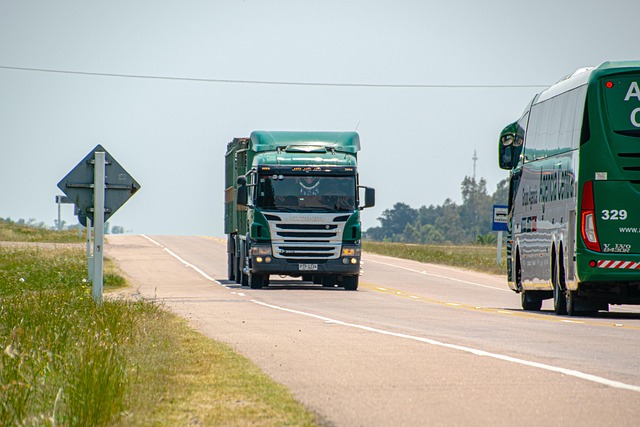Looking to register your car in California? This guide will walk you through the process, ensuring a smooth experience. First, understand the state’s specific requirements for car registration, focusing on key aspects like eligibility and necessary documents. Next, gather essential papers for a crucial step in the process: VIN verification. Learn how to perform this check accurately. Then, decide if you’ll complete the registration online or visit a DMV office. Finally, pay fees and receive your unique California license plate.
- Understand California Car Registration Requirements
- Gather Necessary Documents for VIN Verification
- Perform Vehicle Identification Number (VIN) Check
- Complete Online Registration or Visit DMV
- Pay Registration Fees and Receive Your Plate
Understand California Car Registration Requirements

Before registering your car in California, it’s crucial to understand the state’s specific requirements for vehicle registration. One essential step is the verification of your car’s Vehicle Identification Number (VIN). This process ensures that your vehicle matches the records and helps prevent fraud. In California, a VIN inspection or vin verification is typically done by an authorized agent or a mobile vin inspector/verifier. They will cross-reference the information on the certificate of ownership and the VIN etched into the car’s chassis to confirm its authenticity.
During this process, they may also check other important documents such as proof of insurance and identification. Ensure that your vehicle meets all safety standards and environmental regulations before proceeding with registration. This step is vital to ensure a smooth registration process and avoid any potential issues in the future.
Gather Necessary Documents for VIN Verification

Before you begin the registration process, ensure you have all the required documents for a successful VIN verification. This includes your vehicle’s registration certificate from the previous state, proof of insurance, and a valid driver’s license. Additionally, you’ll need the Vehicle Identification Number (VIN) from your car, which can typically be found on the vehicle’s title or in its manual.
For a hassle-free vin verification process, consider using a mobile vin verifier. These services allow you to obtain an accurate VIN reading quickly and easily. Some even offer remote inspection options, where a specialist can remotely check your car’s details, saving you time and effort. This is especially beneficial if you’re unfamiliar with the documentation required or face challenges accessing necessary papers.
Perform Vehicle Identification Number (VIN) Check

Before proceeding with the registration process, it’s crucial to perform a Vehicle Identification Number (VIN) check. This step is an essential part of ensuring the car’s authenticity and history. A VIN verification involves using a mobile vin verifier or conducting a simple online inspection to gather vital information about the vehicle.
By checking the VIN, you can uncover important details such as the make, model, year, and even previous owners. This process helps to detect any potential issues or discrepancies, ensuring that both you and the California Department of Motor Vehicles (DMV) have accurate data. A mobile vin inspection is a convenient option, allowing you to complete this step quickly and efficiently from the comfort of your own home.
Complete Online Registration or Visit DMV

In California, registering your car involves either completing the process online or visiting a DMV office. If you opt for an online registration, you’ll need to provide personal details and vehicle information, including your Vehicle Identification Number (VIN). This VIN verification is crucial as it ensures the accuracy of your car’s data. You can use a mobile vin verifier or conduct a vin inspection to gather this essential information before starting the registration process.
Online platforms often streamline the procedure by allowing you to upload necessary documents and photos digitally, making it convenient for busy folks. Conversely, visiting a DMV allows for direct interaction with staff who can guide you through the steps. Either way, ensure you have all required documents ready, such as proof of ownership and insurance, to avoid any delays during registration.
Pay Registration Fees and Receive Your Plate

After completing your vehicle’s registration application and gathering all necessary documents, the next step is to pay the required fees. In California, these fees include the registration fee, vehicle fuel tax, and a title fee if applicable. The total cost can vary depending on your vehicle’s type and age, so be sure to check the current rates. Payment methods typically include cash, credit card, or debit card. Once the fees are paid, you’ll receive your unique California license plate.
Your license plate is more than just a piece of metal; it’s your official identification for your vehicle on California roads. It’s crucial to ensure the accuracy of your Vehicle Identification Number (VIN) during the registration process, which can be verified through a mobile vin inspection or at a local DMV office. This step ensures that your vehicle’s details are correctly recorded, enhancing safety and security for all road users.
Registering a car in California involves understanding state requirements, gathering essential documents for VIN verification, and either completing the process online or visiting a DMV office. After passing the VIN check, you’ll pay registration fees and receive your vehicle’s license plate. Remember to keep your documentation up-to-date for smooth driving in The Golden State.
